Let’s be honest – walking into a store and seeing dozens of honey options can be overwhelming. Which one is truly local? Is that golden jar really pure honey? I get these questions from fellow honey lovers all the time, and that’s exactly why I’ve put together this comprehensive guide to help you find the real deal.
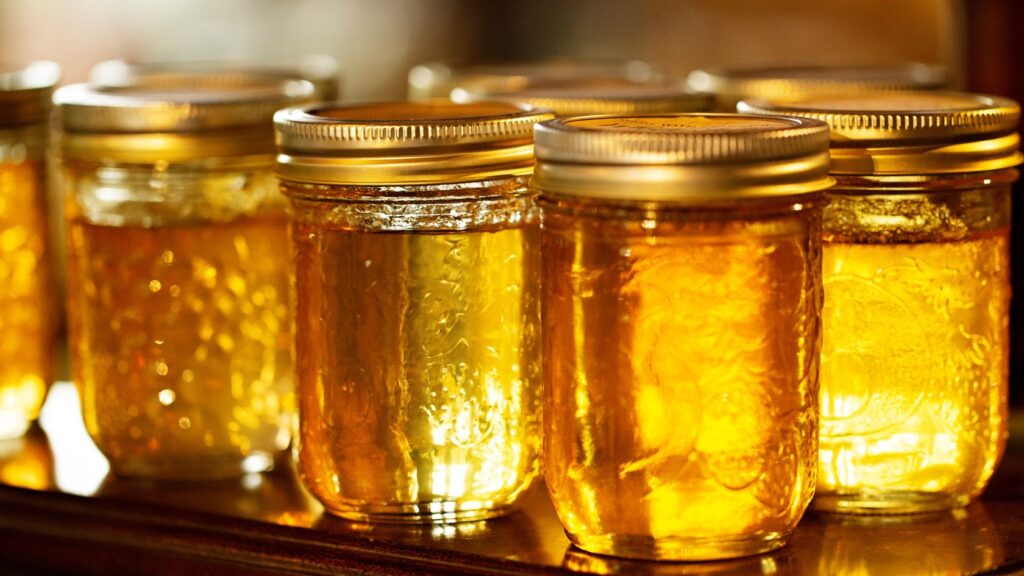
Why Local Honey Should Be Your Go-To Choice
You’ve probably heard people raving about local honey, and there’s a good reason for that. Actually, there are several pretty compelling reasons:
Think about this – when you grab that jar of local honey, you’re not just getting a delicious natural sweetener. You’re supporting the beekeeper down the road who’s passionate about maintaining healthy hives. Their bees are pollinating your neighborhood’s gardens and farms, making our local ecosystem thrive. Plus, since it hasn’t traveled across the country (or globe), you’re getting honey that’s fresher and has a smaller carbon footprint.
Many of my friends swear by local honey for helping with their seasonal allergies, thanks to the local pollen it contains. While the science is still out on this one, what we do know is that local honey is typically less processed and retains more of its natural goodness.
Spotting the Real Deal: How to Identify Authentic Local Honey

The Visual Test
First things first – let’s talk about what real honey actually looks like. Forget about that perfectly clear, uniformly golden stuff you might be used to seeing. Authentic local honey may be:
- A bit cloudy or opaque (that’s a good thing!)
- Varying in color (depending on what flowers the bees visited)
- Sometimes crystallized (more on that later – it’s totally natural)
- Might have tiny bits of pollen or honeycomb (nature’s stamp of approval)
Label Detective Work
Here’s what to look for when you’re reading honey labels:
- Words like “raw” and “unfiltered” are your friends
- Look for the beekeeper’s name and location
- Steer clear of vague terms like “honey blend”
- Check for a local address or apiary number
Try These Simple Home Tests
Want to channel your inner honey detective? Here are some easy tests you can do:
- The Thumb Test: Drop a bit on your thumb. Real honey stays put instead of running all over the place.
- The Water Test: Here’s a fun one – drop a spoonful in water. Pure honey sinks and stays together, while the fake stuff dissolves quickly.
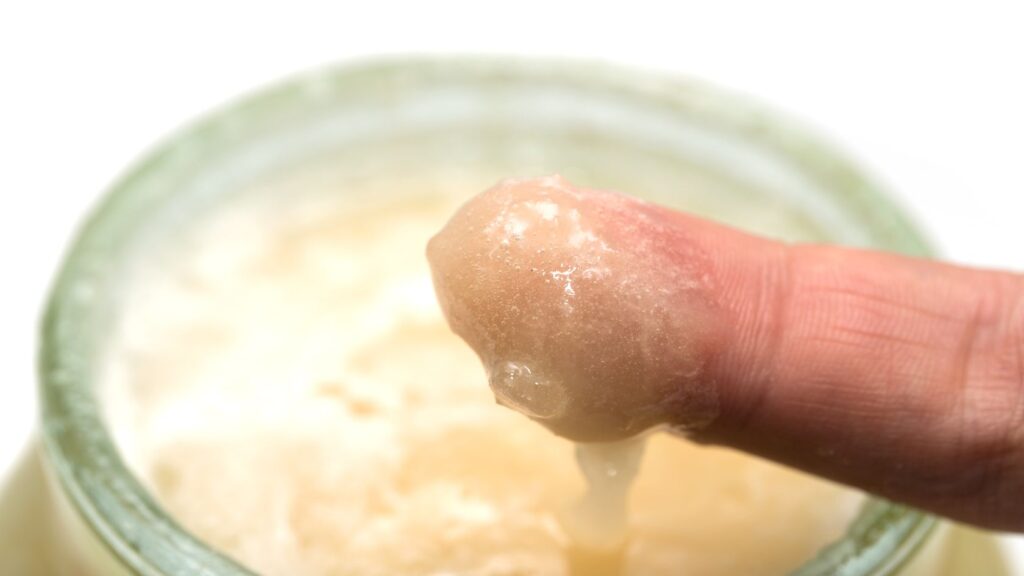
The Fascinating World of Honey Varieties
Let me tell you something cool about honey – it’s like wine, with different seasons bringing totally different flavors and colors. Here’s what you might find throughout the year:
Spring’s Light and Bright Offerings
- Pale, delicate honey from fruit tree blossoms
- Light, almost floral taste
- Perfect for drizzling over yogurt or fresh fruit
Summer’s Rich Amber Treasures
- Deeper colored honey from summer blooms
- More robust flavors
- Try these varieties:
- Wildflower (my personal favorite – every batch is unique!)
- Clover (the crowd-pleaser)
- Buckwheat (dark and bold, like the coffee of honey)
Fall’s Deep, Complex Flavors
- Usually the darkest honey of the year
- Rich, intense taste
- Often made from late-season flowers and herbs
Keeping Your Liquid Gold Fresh: Storage Tips That Work
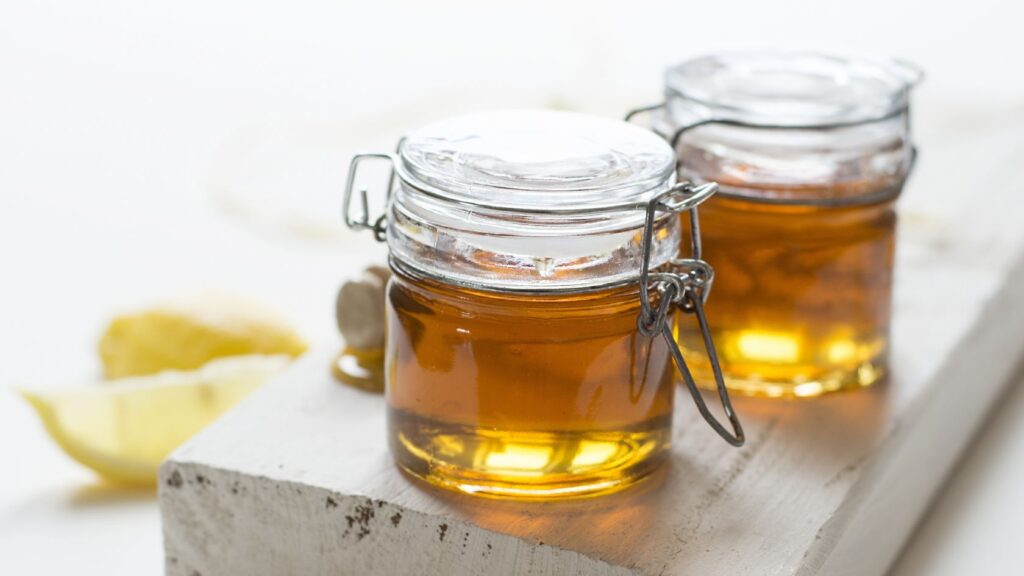
Let’s talk about storing your honey stash. I’ve learned these tips the hard way (yes, I once stored honey in a metal container – rookie mistake!). Here’s what actually works:
Temperature is key – think Goldilocks zone:
- Room temp is perfect (around 68-75°F)
- Keep it away from your sunny windowsill (though the jars look pretty there!)
- Your pantry or kitchen cabinet is ideal
Pro tip: Use glass containers with tight-fitting lids. Trust me on this one – honey loves to absorb nearby odors, and nobody wants their honey tasting like last week’s garlic!
The Crystal Clear Truth About Crystallization
Here’s something that used to freak me out but is actually totally normal – crystallization. If your honey starts looking grainy or solid, congratulations! You’ve got the real deal. Here’s what to do when it happens:
Give it a warm bath:
- Set the jar in warm (not hot!) water
- Stir occasionally until the crystals melt
- Skip the microwave (unless you want to zap away all the good stuff)
Fun fact: Some honey varieties, like alfalfa, crystallize faster than others. It’s just their personality!
Busting Common Honey Myths
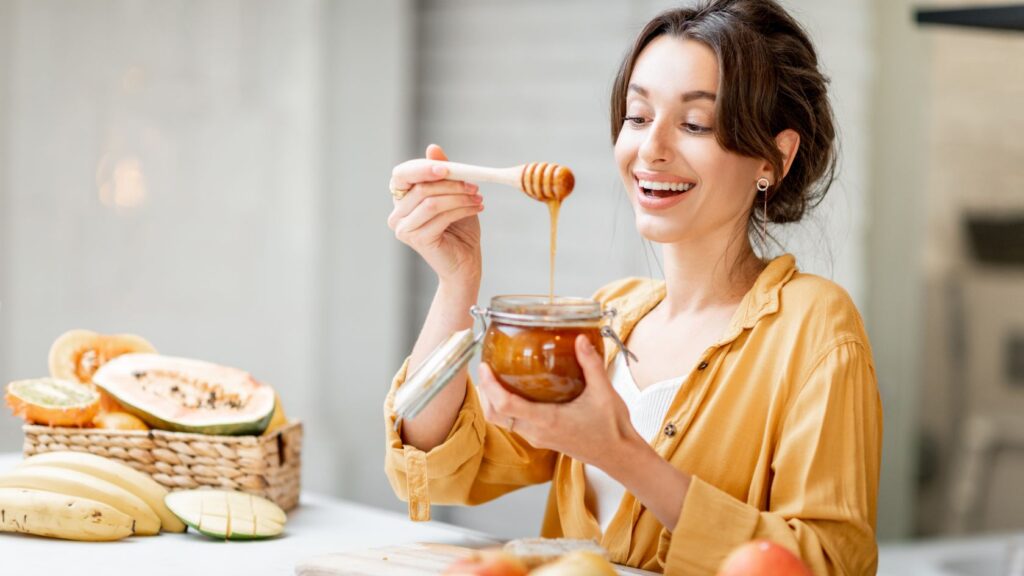
Let’s clear up some honey confusion I hear all the time:
“Honey never goes bad, right?” Well, sort of. While honey is incredibly shelf-stable, it’s not invincible. Poor storage can lead to fermentation. Nobody wants fizzy honey!
“Help! My honey crystallized – it must be bad!” Nope! As we just learned, crystallization is actually a sign you’ve got pure honey. It’s like honey’s version of a certificate of authenticity.
“The darker the honey, the better it is.” Not necessarily! Light and dark honey are just different, not better or worse. It’s like comparing apples and oranges – they’re both great for different reasons.
“Local honey will cure my allergies!” While lots of people swear by this, the science isn’t solid yet. But hey, local honey has plenty of other benefits worth buzzing about!
Beyond the Jar: Other Amazing Bee Products
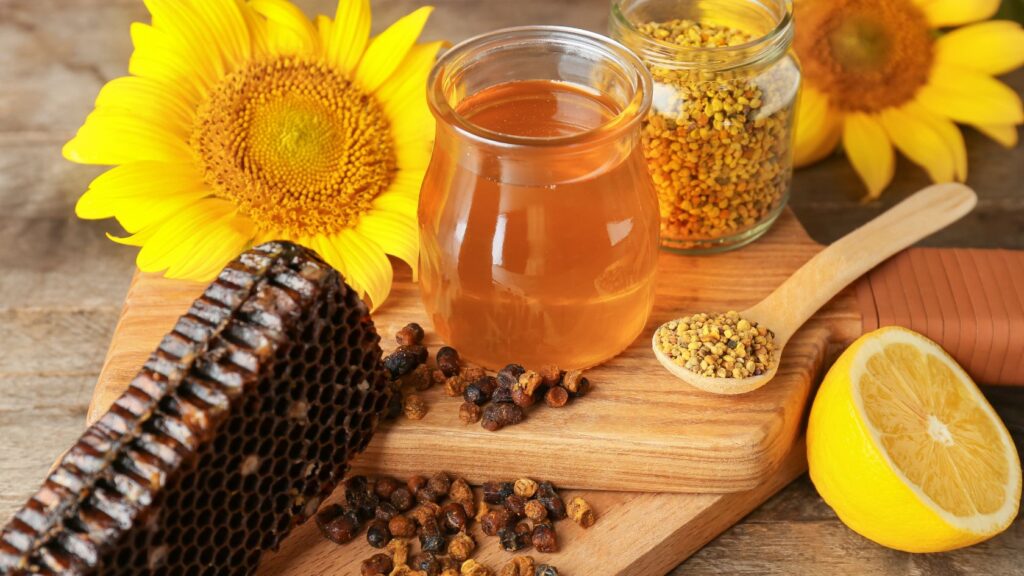
The honey world goes way beyond your morning tea sweetener. Here are some other incredible products from our busy bee friends:
Beeswax: The ultimate natural alternative to synthetic waxes. I use it for everything from homemade lip balm to food wraps. Look for the yellow, unbleached stuff – that’s the good stuff.
Propolis: Think of it as the bee’s medicine cabinet. This sticky substance is packed with antimicrobial properties. Available as tinctures or in natural skincare products.
Bee Pollen: Nature’s multivitamin! Sprinkle these little golden nuggets on your breakfast for a nutrient boost. Just start small – it’s potent stuff!
Raw Honeycomb: The whole package – honey, wax, and all. It’s a special treat that gives you the complete honey experience. Plus, it looks gorgeous on a cheese board!
Where to Score Your Local Honey
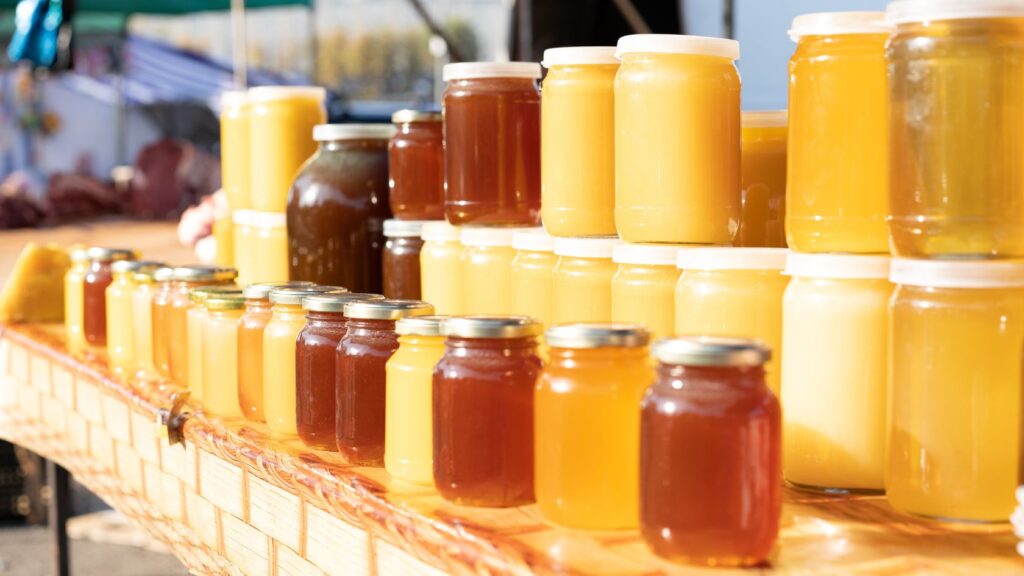
Ready to find your new favorite honey supplier? Here’s where to look:
Start Online: Our directory at myhoneycrate.com/listings is your best bet for finding verified local beekeepers. You can read reviews, check what varieties they offer, and connect directly with producers.
Hit the Local Scene:
- Farmers markets (my favorite for trying samples!)
- Food co-ops (they usually vet their suppliers carefully)
- Natural food stores
- Farm stands (often the freshest options)
Go Straight to the Source: Nothing beats visiting a local apiary. Many beekeepers love showing visitors their operation, and some even offer honey harvesting demonstrations. It’s fascinating stuff!
Smart Questions to Ask Your Beekeeper
When you meet your local beekeeper (and I hope you do!), here are some conversation starters that’ll help you learn more about your honey:
- “Where do you keep your hives?” (Closer = more local)
- “What’s blooming when you collect this honey?” (Affects flavor)
- “When was this batch harvested?” (Fresher is better)
- “How do you process your honey?” (Less processing = more benefits)
- “What’s your favorite way to use this variety?” (Beekeepers often have the best tips!)
Red Flags: When to Walk Away
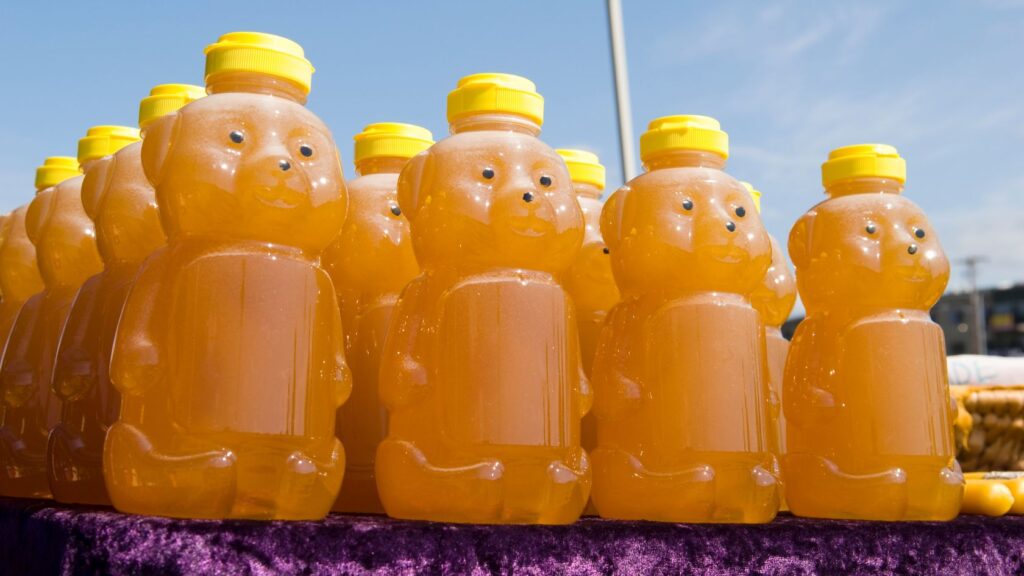
Not all honey is created equal. Here’s when to be skeptical:
Skip it if:
- The price seems too good to be true
- There’s no crystallization over time
- You spot added ingredients
- The label is vague about sources
- You see separation or odd coloring
Ready to Find Your Local Honey?
Finding real, local honey is like going on a delicious treasure hunt. It’s about connecting with your community, supporting local agriculture, and treating yourself to nature’s sweetest gift.
Ready to start your honey adventure? Head over to myhoneycrate.com/listings to find verified beekeepers in your area. Your perfect jar of local honey is waiting to be discovered!

Comments